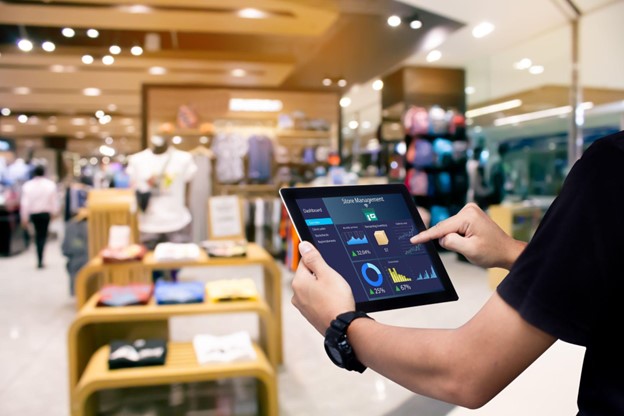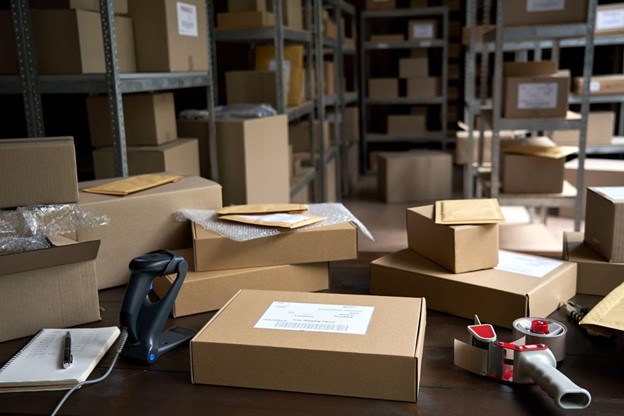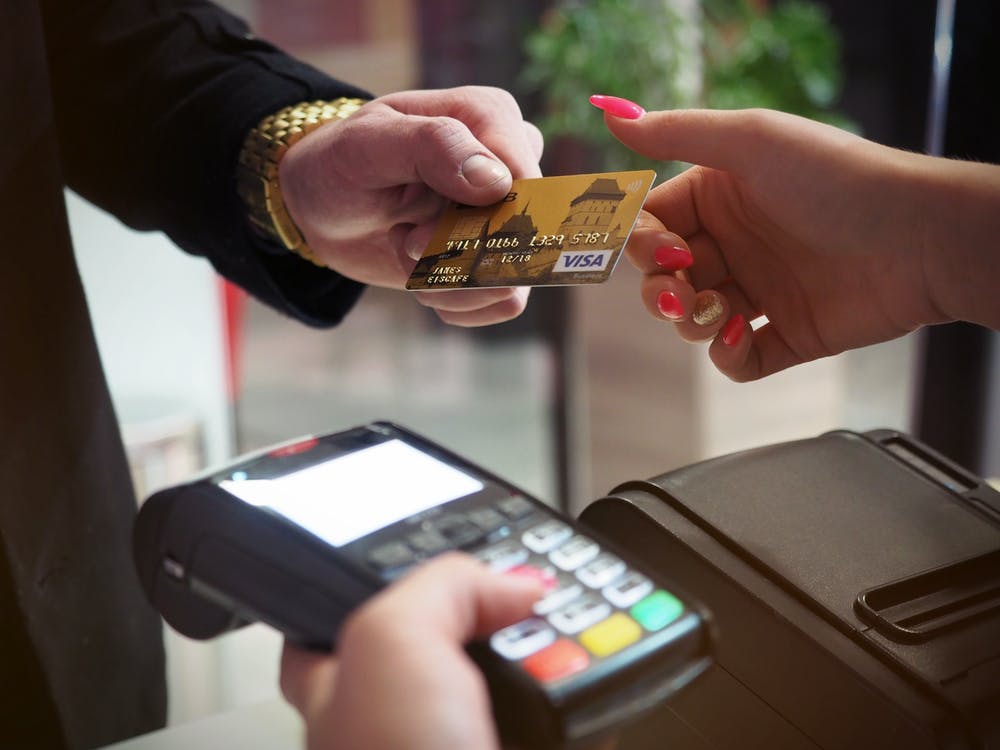Three focuses of my blog are Financial Literacy/Money, Business/Entrepreneurship and Workplace Discussions. Any workplace requires safety and retail workplaces are no different. The following guest post is entitled, for Retail Workplaces.
* * *

Creating a culture of safety is paramount in retail workplaces to ensure the well-being of employees and customers alike. The retail industry presents various hazards, from slips and falls to potential violence, emphasizing the need for comprehensive safety measures. This introduction will explore key strategies for fostering a culture of safety in retail environments, such as clothing stores, supermarkets, and more.
Why is promoting a culture of safety important?
Promoting safety in retail workplaces is paramount for safeguarding employees, customers, and your business. By prioritizing safety, you protect your workforce from accidents and injuries, ensure legal compliance, reduce costs associated with workplace incidents, and boost productivity.
Creating a safe environment fosters employee morale, engagement, and loyalty, leading to higher levels of performance and satisfaction. A commitment to safety enhances your reputation, instills trust and confidence in employees and customers, and positions your business as a responsible member of the community. Overall, investing in safety measures and cultivating a culture of safety is not only ethically imperative but also a strategic decision that contributes to the long-term success and sustainability of your business.
Establish clear policies and procedures
Establishing clear and comprehensive safety policies and procedures is foundational to creating a culture of safety in a retail environment. These policies should be carefully tailored to address the specific hazards present in the workplace, whether they’re related to heavy lifting, equipment operation, or handling hazardous materials. Make sure these policies are not just written down but actively communicated to all employees through training sessions, manuals, and regular reminders. Regular review and updates to these policies are also crucial to ensuring they remain relevant and effective.
Provide thorough training
Regular safety training sessions are essential for ensuring that all employees understand and adhere to safety protocols. Training should be provided to both new hires and existing staff and cover a wide range of topics, including proper lifting techniques, emergency procedures, hazard identification, and the use of personal protective equipment (PPE). Interactive and hands-on training sessions are often more effective than simply providing written materials, as they allow employees to actively engage with the material and practice safety techniques in a controlled environment.
Promote safety awareness
Creating a culture of safety requires more than just having policies and procedures in place; it requires active participation and engagement from employees at all levels of the organization. Encourage employees to actively identify and report safety hazards by implementing a system for reporting hazards and near-misses. Ensure that employees feel empowered to speak up about safety concerns without fear of reprisal, and provide avenues for them to contribute suggestions for improving safety in the workplace.
Provide your employees with proper equipment and tools
Equipping employees with the necessary tools and personal protective equipment (PPE) is essential for ensuring their safety on the job. Conduct regular assessments to identify the specific equipment and PPE needed for each task, and ensure that employees are trained on how to properly use and maintain this equipment. Additionally, make sure that equipment is regularly inspected and replaced as needed to prevent malfunctions or safety hazards.
Maintain a clean and organized workplace

A clutter-free and well-organized workplace not only improves efficiency but also reduces the risk of accidents and injuries. Implementing regular cleaning schedules and ensuring that aisles, walkways, and emergency exits are always clear and accessible are simple yet effective ways to minimize safety hazards. Encourage employees to take ownership of their workspace by keeping it clean and organized, and provide resources and support to help them maintain a safe working environment.
Install security measures
In addition to physical safety, retail environments must also prioritize security measures to protect employees and customers from potential threats such as theft, violence, or harassment. Implementing security cameras, alarm systems, and adequate lighting can help deter criminal activity and create a safer work environment. Additionally, providing training on how to respond to security threats and establishing clear protocols for reporting incidents can help employees feel more secure and prepared to handle emergencies.
Be prepared for emergencies
Developing and regularly reviewing emergency response plans is crucial for ensuring that employees know how to respond effectively in a variety of emergency situations, including fires, medical emergencies, and natural disasters. Conducting regular drills and simulations can help reinforce emergency procedures and ensure that employees are prepared to act quickly and decisively when necessary. Make sure that emergency response plans are easily accessible to all employees and that they are regularly updated to reflect any changes in the workplace or potential hazards.
Encourage open communication
Fostering a culture of open communication is essential for creating a safe and supportive work environment where employees feel comfortable voicing their concerns and suggestions. Establishing channels for communication, such as regular safety meetings, suggestion boxes, or anonymous reporting systems, can help facilitate dialogue and encourage employees to actively participate in safety initiatives. Additionally, providing opportunities for feedback and actively listening to employee concerns demonstrates a commitment to their well-being and helps identify areas for improvement.
Lead by example
Leadership buy-in is critical for establishing a culture of safety throughout the organization. Leaders should lead by example by actively participating in safety initiatives, adhering to safety protocols, and demonstrating a commitment to the well-being of employees. This includes visibly supporting safety initiatives, providing resources and support for safety efforts, and holding themselves and others accountable for maintaining a safe work environment. When employees see that safety is a top priority for leadership, they are more likely to prioritize it themselves.
Reward and recognize safety measures
Recognizing and rewarding employees who demonstrate a commitment to safety helps reinforce positive behaviors and encourages continued vigilance. Consider implementing a safety recognition program that acknowledges employees who adhere to safety protocols, identify and report hazards, or actively participate in safety initiatives. Rewards can take many forms, from verbal praise and certificates to tangible rewards such as gift cards or bonuses.
The importance of safety
Creating a culture of safety in retail workplaces is not only a moral imperative but also a strategic business decision. By implementing the strategies we’ve outlined, you can protect your workforce, customers, and bottom line while fostering a positive work environment.
Prioritizing safety demonstrates a commitment to employee well-being, legal compliance, and ethical business practices, ultimately enhancing your business’s reputation and positioning it as a responsible leader in the industry. With safety as a foundational principle, retail businesses can thrive in an environment where employees feel valued, customers feel secure, and the business operates with integrity and resilience.
Ashley Nielsen

Ashley Nielsen earned a B.S. degree in Business Administration Marketing at Point Loma Nazarene University. She is a freelance writer who loves to share knowledge about general business, marketing, lifestyle, wellness, and financial tips. During her free time, she enjoys being outside, staying active, reading a book, or diving deep into her favorite music.

